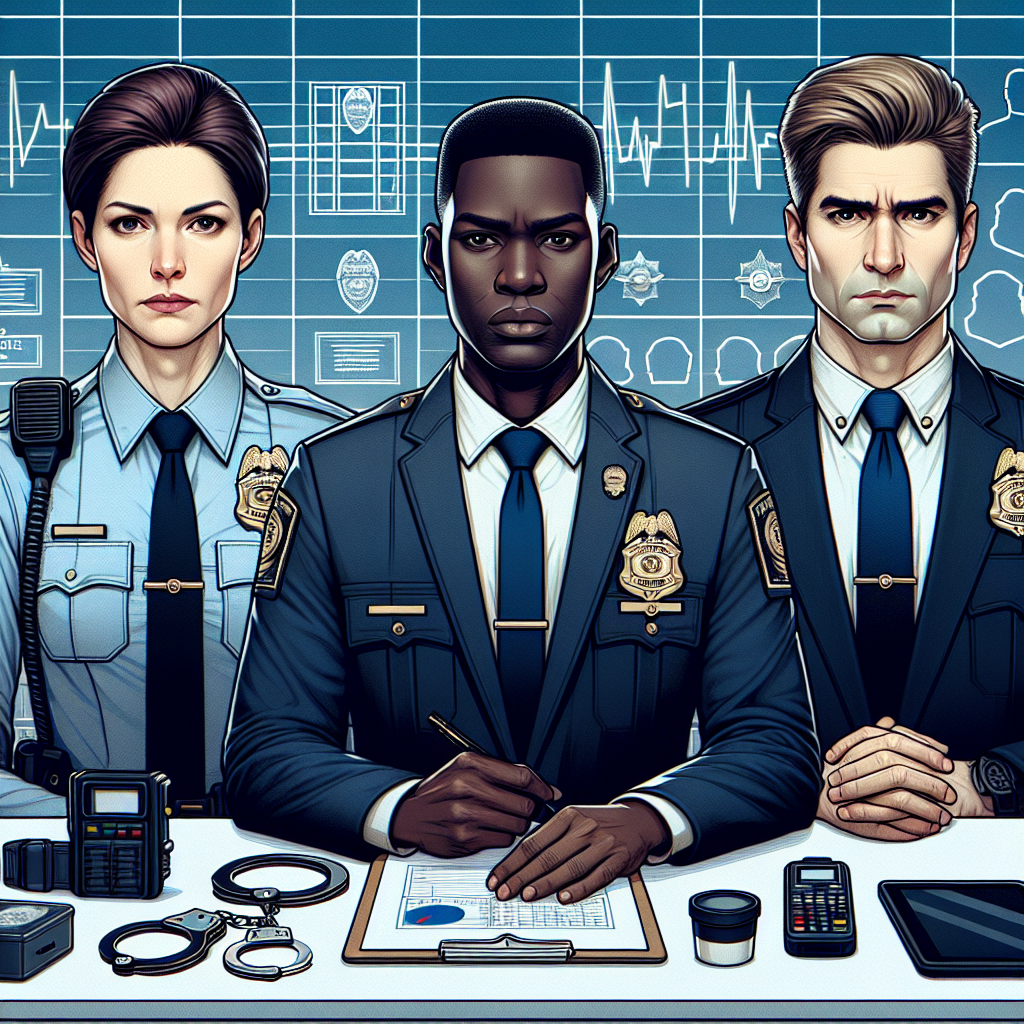In a world where justice hangs in the balance, the integrity of eyewitness testimonies plays a crucial role in the outcomes of criminal cases. Navigating the complexities of lineups—whether photographic or live—can mean the difference between wrongful convictions and ensuring justice is served. Perfecting the Lineup: Best Practices for Law Enforcement Procedures isn’t just a protocol; it’s a necessity for safeguarding the rights of individuals while bolstering the judicial system’s credibility.
Introduction
Imagine being falsely accused of a crime, with your fate resting on the identification of a witness who may be unsure or even mistaken. The procedures that govern lineups directly impact the reliability of witness identifications. As such, law enforcement professionals must adhere to best practices in crafting lineups that minimize bias and enhance accuracy.
This article explores the best practices that can help law enforcement officials perfect their lineups, ensuring that both the rights of the accused and the effectiveness of the judicial process are upheld.
Understanding Lineups: A Brief Overview
What is a Lineup?
A lineup is a procedure used by law enforcement to allow witnesses to identify suspects from a group of individuals. Lineups can be either live (with real people) or photographic (using images), each having its own advantages and challenges.
Why Lineups Matter
Eyewitness misidentification is one of the leading causes of wrongful imprisonment. A study conducted by the Innocence Project revealed that nearly 70% of wrongful convictions overturned by DNA evidence were due to mistaken identifications. Perfecting the Lineup: Best Practices for Law Enforcement Procedures aims to minimize such occurrences by instituting thorough and scientifically-backed methodologies.
Proven Best Practices for Conducting Lineups
1. Utilize Simultaneous vs. Sequential Lineups
Simultaneous lineups present all suspects at once, often leading to relative judgments where one individual is chosen over another based on features. In contrast, sequential lineups present suspects one at a time, reducing the likelihood of witnesses making comparisons that can lead to incorrect identifications.
Table 1: Comparison of Lineup Types
| Lineup Type | Description | Benefits | Disadvantages |
|---|---|---|---|
| Simultaneous | All suspects shown together | Quick identification | Relative judgment biases |
| Sequential | Suspects shown one at a time | Reduces comparison biases | May take longer for witnesses |
2. Ensure Proper Instructions
Clear and impartial instructions are essential. Witnesses must understand that:
- The suspect may or may not be present in the lineup.
- They should take their time making a decision.
- They should not feel pressured to make an identification.
By emphasizing these points, law enforcement ensures the reliability of witness choices.
Case Study: The Flawed Identification
In a case from 1984, a witness incorrectly identified the wrong individual from a simultaneous lineup, leading to a wrongful conviction. Officials did not properly instruct the witness, resulting in confusion. Had best practices been applied, the outcome might have been significantly different.
3. The Role of Blind Administration
Incorporating blind administration—where the officer administering the lineup does not know who the suspect is—can significantly reduce unintentional cues that may influence the witness’s decision. This practice is essential for eliminating biases.
4. Use of Filler Individuals
When selecting fillers (the individuals in the lineup alongside the suspect), it’s vital to include individuals who match the suspect’s description reasonably well. This practice increases the validity of the identification process and prevents undue attention on the suspect.
Table 2: Considerations for Fillers
| Filler Characteristic | Importance |
|---|---|
| Racial and gender similarity | Avoids drawing undue attention to the suspect |
| Similar clothing | Maintains consistency in visual presentation |
| Varied backgrounds | Prevents biases based on other characteristics |
5. Record the Process
The entire lineup procedure, including witness instructions, witness demeanor, and the identification decisions, should be documented. This not only adds transparency but can also be a critical resource in case of legal challenges later.
Analyzing the Outcomes: The Importance of Data
Why Tracking Results Matters
Tracking the outcomes of lineups can yield valuable insights into their effectiveness. By analyzing how often lineups result in accurate identifications versus mistakes, law enforcement can refine procedures and make data-driven decisions.
Case Study: Data-Driven Improvements
In a police precinct that began tracking lineup outcomes, officials reported a 30% decrease in misidentifications after one year by adopting evidence-based practices. The results encouraged further training and investments into lineup procedures.
Frequently Asked Questions (FAQs)
1. What types of lineups are most effective?
Sequential lineups have shown to reduce cross-comparison biases, thus being most effective for accurate identifications.
2. How can law enforcement reduce bias in lineups?
Utilizing blind administration and providing unbiased instructions can help mitigate biases during the identification process.
3. How should a witness be prepared for a lineup?
Witnesses must be briefed on the process, reassured about their decision-making, and instructed that the suspect may or may not be present.
4. What are fillers and why are they important?
Fillers are individuals included in the lineup to prevent the witness’s attention from focusing solely on the suspect. They should resemble the suspect to maintain fairness.
5. Why is documenting the lineup process crucial?
Documentation adds an essential layer of transparency and accountability, providing a record that can be crucial in court proceedings.
Conclusion
Perfecting the Lineup: Best Practices for Law Enforcement Procedures is not merely a checklist; it represents a comprehensive approach to safeguarding the justice system. By visualizing the impact of these practices through data and real-case scenarios, we can see their full potential in preventing wrongful convictions and promoting accurate justice.
As law enforcement agencies continue to refine their procedures based on evidence and best practices, the potential for creating a trustworthy justice system becomes increasingly possible. In pursuing improvement, remember: every lineup not only serves the quest for justice but also represents the humanity behind each case.
Whether you’re a law enforcement professional or simply an advocate for justice, embracing these best practices can elevate the standards necessary for effective eyewitness identification and, ultimately, the pursuit of truth.

